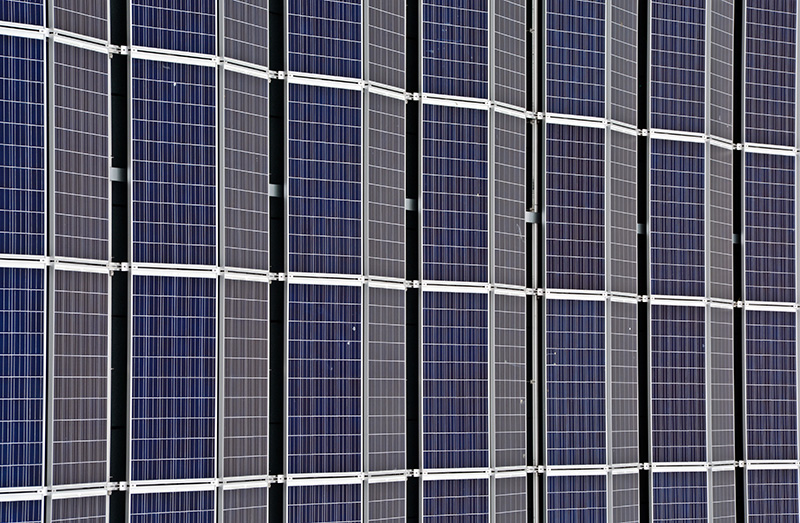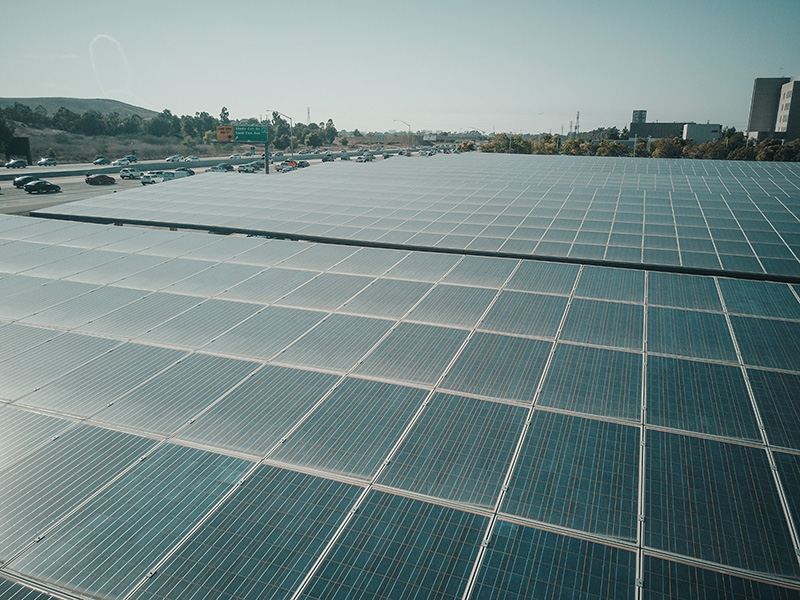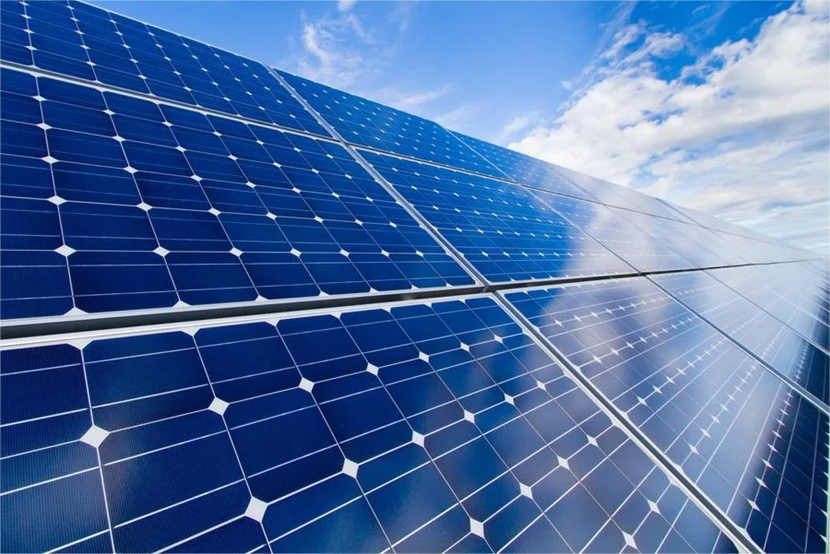Description
Polysilicon solar cells, also known as multicrystalline solar cells, typically have efficiencies ranging from 15% to 20%. This means that they can convert 15% to 20% of the sunlight they receive into usable electricity. The efficiency can vary based on the quality of the silicon, manufacturing techniques, and advancements in solar cell design.
Basics of Solar Cell Efficiency
Solar cell efficiency is a pivotal aspect when evaluating the performance of solar panels. It dictates how well a solar cell can capture and convert sunlight into usable energy. A higher efficiency ensures greater energy yield from a limited surface area.
Definition of Solar Cell Efficiency
What is it? Solar cell efficiency denotes the proportion of sunlight converted into electricity by the solar cell.
Formula:
Efficiency (%) = (Output Power / Input Solar Power) × 100
g., If a solar cell takes in 100 watts of sunlight and produces 20 watts of electrical power, its efficiency stands at 20%.
Factors Influencing Efficiency
Material Quality:The purity of the materials plays a significant role. Higher quality materials usually have fewer defects, allowing for superior electron movement and enhanced efficiency.
Manufacturing Techniques:Innovations in manufacturing can yield thinner and more effective solar cells, decreasing energy losses and amplifying overall performance.
Temperature:As temperatures escalate, solar cells often see a dip in efficiency. Hence, some installations may integrate cooling systems to maintain peak performance.
Light Absorption:Coatings and design intricacies determine the absorption rate of sunlight.Utilizing anti-reflective coatings ensures that more sunlight permeates the cell instead of bouncing off.
Electrical Losses:Elements like resistance within the cell or at connections can spawn electrical losses.Efficiency gets a boost when these losses are kept at bay through optimal design and superior materials.
In essence, comprehending solar cell efficiency aids in gauging their operational prowess and prospective energy output capabilities. For a deeper dive into the intricacies of solar cell efficiency, you can explore
this comprehensive resource.
Polysilicon: Its Properties and Use in Solar Cells
Polysilicon, or multicrystalline silicon, holds a significant position in the solar industry due to its optimal properties for solar cell production. It strikes a balance between efficiency and cost, making it a popular choice for solar panel manufacturing.
Production of Polysilicon
- Raw Material Extraction:The process commences with mining quartz, a rich source of silicon. The extracted quartz undergoes a purification process to retrieve metallurgical-grade silicon.
- Refinement:This metallurgical-grade silicon is then further refined using the Siemens process, where it reacts with hydrogen to produce highly pure polysilicon and byproducts like trichlorosilane.
- Formation:In the final stages, the pure polysilicon gets melted and cast into square ingots or blocks, which are then sliced into thin wafers ready for solar cell fabrication.
- Cost-Effectiveness:One of the primary reasons for the extensive use of polysilicon in solar cells is its relatively lower production cost compared to its counterpart, monocrystalline silicon.
Characteristics Beneficial for Solar Cells
- Efficiency:While polysilicon solar cells may not be as efficient as their monocrystalline counterparts, they offer a competitive efficiency range suitable for most applications, often hovering around the 15-20% mark.
- Versatility:Polysilicon wafers are less sensitive to impurities, making them versatile in different environmental conditions.
- Thermal Coefficient:Polysilicon has a favorable thermal coefficient, meaning its efficiency drops are less dramatic with rising temperatures compared to some other materials.
- Durability:The structure of polysilicon is resilient, granting the solar cells a long lifespan and ensuring robust performance.
Understanding the properties and benefits of polysilicon offers insights into its widespread use in the solar industry. Those interested in a deeper exploration can refer to
this extensive guide on polysilicon.
Comparison with Other Solar Cell Materials
Solar technology has witnessed numerous advancements, leading to the emergence of various materials for solar cell construction. Each material has its unique properties, efficiency levels, and application scenarios. Here's a comparison of polysilicon with other prevalent solar cell materials.
Monocrystalline Silicon
- Composition:As the name suggests, monocrystalline silicon cells are derived from a single, pure silicon crystal.
- Efficiency:Generally, they offer the highest efficiency among silicon-based solar cells, often ranging between 20-25%.
- Appearance:Characterized by their uniform dark look and rounded edges.
- Cost:Typically, they are more expensive than polysilicon due to the intricate manufacturing process, ensuring high purity.
- Application:Preferred for situations where space is at a premium due to their high efficiency.
For further reading, check out this detailed article on
monocrystalline silicon.
Thin-Film Solar Cells
- Composition:Made by depositing one or more thin layers of photovoltaic material onto a substrate.
- Efficiency:Usually lower than silicon-based cells, often lying in the 10-12% range.
- Flexibility:They can be flexible, offering more versatile installation options.
- Cost:Generally cheaper in production but may require more space to achieve similar energy outputs as crystalline silicon cells.
Dive deeper into
thin-film solar cells here.
Perovskite Solar Cells
- Composition:Utilizes perovskite-structured compounds, most commonly a hybrid organic-inorganic lead or tin halide-based material, as the light-harvesting active layer.
- Efficiency:Despite being a newer entrant, they've reached efficiencies surpassing 25%, making them a promising future technology.
- Stability:Their long-term stability has been a challenge, but ongoing research aims to address this.
Here's an extensive analysis of
perovskite solar cells.
Organic Photovoltaic Cells
- Composition:These cells use organic compounds to absorb light and convert it to electricity.
- Efficiency:Generally lie in the range of 10-15%.
- Advantages:They are lightweight, flexible, and potentially semi-transparent, offering unique applications like integration into windows or curved surfaces.
- Challenges:Often, they have a shorter lifespan compared to inorganic alternatives.
For a deep dive, consider reading about
organic photovoltaic cells.
To sum up, while polysilicon remains a dominant player in the solar industry, ongoing research in materials science continually presents new and promising contenders in the realm of solar energy.
Advancements and Challenges in Polysilicon Solar Cell Efficiency
Polysilicon solar cells, once the mainstay of the solar industry, have experienced various advancements over the years. This development has been primarily aimed at improving efficiency, longevity, and cost-effectiveness. Yet, like all technologies, they face challenges that researchers and manufacturers continuously address.
Technological Advancements Improving Efficiency
Advancements in polysilicon solar cell technology have been driven by the solar industry's unending quest for greater efficiency. Here are a few key developments:
- Surface Passivation Techniques:These have significantly reduced electron recombination on the cell's surface, boosting efficiency levels.
- Improved Cell Design:The introduction of PERC (Passivated Emitter and Rear Cell) technology, for instance, has seen efficiencies rise to over 20% in commercial cells.
- Better Quality Silicon:Advances in refining processes have yielded higher-purity silicon, which inherently has fewer performance-hampering impurities.
- Light Trapping Mechanisms:New designs and coatings trap more sunlight, allowing the cells to harness more energy from the same surface area.
Further insights on these advancements can be gleaned from the comprehensive coverage on
polysilicon solar cells.
Limitations and Challenges
However, despite these improvements, several challenges persist:
- Efficiency Plateau:While efficiency gains have been notable, polysilicon cells, like all solar technologies, approach a theoretical efficiency limit.
- Temperature Sensitivity:Polysilicon solar cells tend to experience efficiency drops at higher temperatures, a problem in intensely sunny environments.
- Bulkiness:In comparison to newer technologies like thin-film or perovskite cells, polysilicon panels are relatively heavy and bulky.
- Manufacturing Costs:Even though costs have decreased over the years, manufacturing high-purity polysilicon remains energy-intensive, affecting the overall cost of the solar panel.
For a deeper understanding of these challenges, consider exploring this detailed article on
solar cell efficiency.
In conclusion, while polysilicon solar cells continue to serve as a reliable and effective solution for solar energy generation, the balance between advancements and challenges guides the future trajectory of this technology.
Real-world Applications and Case Studies
Polysilicon solar cells have found diverse applications in the real world, ranging from sprawling solar farms to humble residential setups and even the vastness of space. Their versatility and continuous advancements have made them a preferred choice for multiple scenarios.
Large Scale Solar Farms Using Polysilicon Cells
Solar farms represent one of the most significant applications of polysilicon solar cells. These vast arrays of panels convert sunlight into electricity on a massive scale, feeding into the power grid.
Case Study: One notable brand that stands out in this sector is
Tongwei. Known for their high-quality polysilicon products, they've been involved in some of the largest solar farm projects globally. Their reputation for durability and efficiency makes them a top choice for utility-scale projects.
For further reading on solar farms and their impact, the article on
solar farms offers comprehensive insights.
Residential Solar Installations
For homeowners looking to reduce electricity bills or move towards sustainable energy, polysilicon solar cells offer a compelling option.
Advantages: Homeowners often opt for polysilicon panels because of their balance between cost and efficiency. Their long lifespan and consistent energy output, even in less-than-ideal sunlight conditions, make them particularly attractive.
An in-depth look into
residential solar installations provides homeowners with all they need to know.
Polysilicon in Space Applications
Space applications demand the highest levels of reliability and efficiency. Polysilicon solar cells have proven to be up to the task.
Satellites and Spacecraft: Many satellites and spacecraft use polysilicon solar cells to harness solar energy in space, where the sun's intensity is much stronger without atmospheric interference.
Those interested in space applications can delve into the topic further by exploring the section on
spacecraft solar panels.
To sum it up, the versatility of polysilicon solar cells, coupled with technological advancements, has made them suitable for a variety of applications, from the vastness of space to our very rooftops.
Environmental Impact and Sustainability
The surge in solar energy deployment brings with it the urgent need to evaluate the environmental implications of our choices. Polysilicon solar cells, while a boon in the fight against fossil fuels, come with their own set of environmental considerations. By addressing these impacts, we can pave the way for truly sustainable solar solutions.
Carbon Footprint of Polysilicon Production
Polysilicon production is an energy-intensive process, and the source of this energy can greatly affect the carbon footprint.
- Energy Source Matters:If the energy used in producing polysilicon comes from coal or other carbon-intensive sources, it diminishes the environmental benefits of the resultant solar panels. On the other hand, using renewable energy sources can reduce the carbon footprint significantly.
- Reducing Carbon Emissions:Many manufacturers are now focusing on reducing their emissions by optimizing the production process and shifting towards sustainable energy sources.
For a more in-depth exploration, the
polysilicon production process offers detailed insights into the steps involved and their associated carbon footprints.
Recycling and End-of-Life Considerations
As the number of solar panels deployed increases, so does the importance of addressing their end-of-life scenario.
- Panel Lifespan:Typically, polysilicon solar panels have a lifespan of 25-30 years. After this, their efficiency decreases, and they may need replacement.
- Recycling Challenges:Currently, recycling solar panels is a complex process, as it involves separating various components like glass, metals, and polymers. However, recycling is crucial to prevent harmful waste and make the most of the materials used.
- Industry Initiatives:Thankfully, industry stakeholders are realizing the importance of recycling. Efforts are underway to develop efficient recycling methods and establish proper disposal guidelines.
Those interested in diving deeper into this topic should explore the details of
solar panel recycling.
In conclusion, while polysilicon solar cells offer a greener alternative to fossil fuels, it's crucial to continuously evaluate and address their environmental impacts. This ensures that our shift to renewable energy is as sustainable and responsible as possible.



